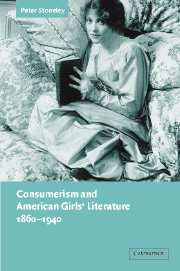5 - Preparing for leisure
Published online by Cambridge University Press: 22 September 2009
Summary
The advert shows a number of elegantly dressed, slender white women. It is twilight, and they saunter in peaceful college grounds. Each young woman is escorted by a handsome man in evening dress. The accompanying text tells us why four hundred and fifteen girls at Wellesley and Barnard, and five hundred and twenty at Smith and Bryn Mawr, use Woodbury's Soap (see illustration 1). This advert, which was published in Ladies' Home Journal in September 1925, shows how important the college girl had become in her first half century. She was beautiful, privileged, a leader of fashion, to be envied and copied. Her deployment by Woodbury's indicates the extent to which higher education for women had been incorporated into the myths and processes of consumerism. This chapter focuses on fictional representations of that incorporation, particularly in the work of Jean Webster. But first let us trace the progress of the college girl, from her feminist origins to her consumerization.
It had seemed so threatening at the beginning. The campaign to gain access to higher education grew alongside the female suffrage campaign: the issue was predicated on women's active dissatisfaction. Men's colleges resisted admitting women on an equal basis, but from mid-century on there were some small co-educational colleges, and some women's “annexes” to the major men's colleges. The dangerously independent all-female institutions began with Vassar in 1865, to be followed by Smith and Wellesley in the 1870s, and Bryn Mawr in 1883.
- Type
- Chapter
- Information
- Consumerism and American Girls' Literature, 1860–1940 , pp. 71 - 89Publisher: Cambridge University PressPrint publication year: 2003

